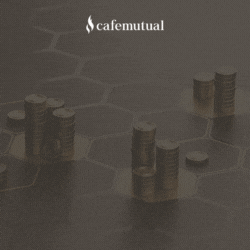Though called fixed income investments, there is little ‘fixed’ about the returns these schemes can generate. Their returns and risks are determined by their investment strategy. Broadly these schemes follow two main investment strategies or a mix of the two strategies.
Strategy 1: Accrual strategy
Accural income is interest income. A fund manager following accrual strategy generates returns from interest payments received from the bond investments. A typical life cycle for the bond investment would be – the fund manager purchases a security - receives periodic interest payments from it – receives the principal at maturity and uses the principal amount to buy more securities.
When a fund manager follows this strategy, he looks for debt papers which offer higher yields as higher the yield the higher the scheme’s returns. Typically, these schemes invest in the low to medium duration securities to minimize risk from interest rate movement. While short term to medium term schemes do generate some capital gains/losses if there is sharp movement in rates, the proportion of capital gains/losses is not high.
Accrual strategy can be further divided into two categories based on the credit quality of the investment:
Investment in high quality securities
Money market securities, ultra-short duration funds, short-term funds and corporate bond funds follow this strategy. They only invest in high quality debt papers minimizing their credit risk. However, this reduces their return potential too as lower quality papers offer higher yields to compensate investors for the excess risks.
As these schemes tend to invest in the shorter end of the spectrum, they face reinvestment risk. To elaborate, you bought a one-year bond in 2018, which offered 8%. It is maturing in May. Over the course of the year, RBI cuts repo rate two times such that new one-year bonds is available at 7.5%. So, when you go back to the market to purchase newer bond, you will earn lower return on your principal. This is re-investment risk. In short, investment in schemes following this strategy makes sense in rising interest rate environment.
You can recommend these schemes to your clients who have low risk appetite.
Investments in low rated securities
This strategy is also followed by credit funds, who invest in lower rated paper to capture higher yields. These schemes follow a buy-and -hold strategy as underlying securities have low liquidity.
Credit rating tries to capture the ability of a corporate to repay the loan. Higher the rating lower the likelihood of default. As these schemes invest in low rated papers, they face credit risk. Credit risk is the possibility that the issuer of the bond may be unable to repay the loan.
Before recommending these schemes to your clients, connect with fund manager to understand the credit risk evaluation process adopted by the fund house. Recommend these schemes only to your clients having moderate to high risk appetite.
Duration strategy
Bond prices fluctuate with interest rate movement. When interest rates rise, bond prices fall and vice versa. Higher the duration of the bond higher the impact of interest rate movement on bond prices.
Why does this happen?
Consider this - you buy a bond (Bond A) for Rs. 100 and it offers interest at 8% annually for 10 years. The next day, RBI announces an increase in repo rate by 50 bps. Now, newer 10-year bond (Bond B) is offering 8.50% interest. If you hold both these bonds for 10 years, then Bond A will give you Rs. 80 (8% x 100 x 10) while bond B will give you Rs. 85 (8.5% x 100 x 10) of interest in total over the next 10 years. Any new purchaser of the bond will prefer Bond B over Bond A as it offers higher returns. In case you need to sell bond A, he will offer you lower price to compensate for the loss in interest income. This is interest rate risk.
Duration strategy is mainly followed by long duration and gilt funds which generate capital gains from change in price of underlying securities. These schemes make maximum returns in falling interest rate scenario. Fund managers following the strategy take a view on interest rates and adjust their scheme’s duration accordingly. In case they believe interest rates are likely to fall, they may increase the scheme’s duration (within regulatory limits) and vice versa. These schemes mainly invest in high rated government securities to minimize credit risk.
Explain interest rate risk to your clients before recommending duration funds. They tend to be risky as their returns can fall sharply if interest rates rise unexpectedly.







